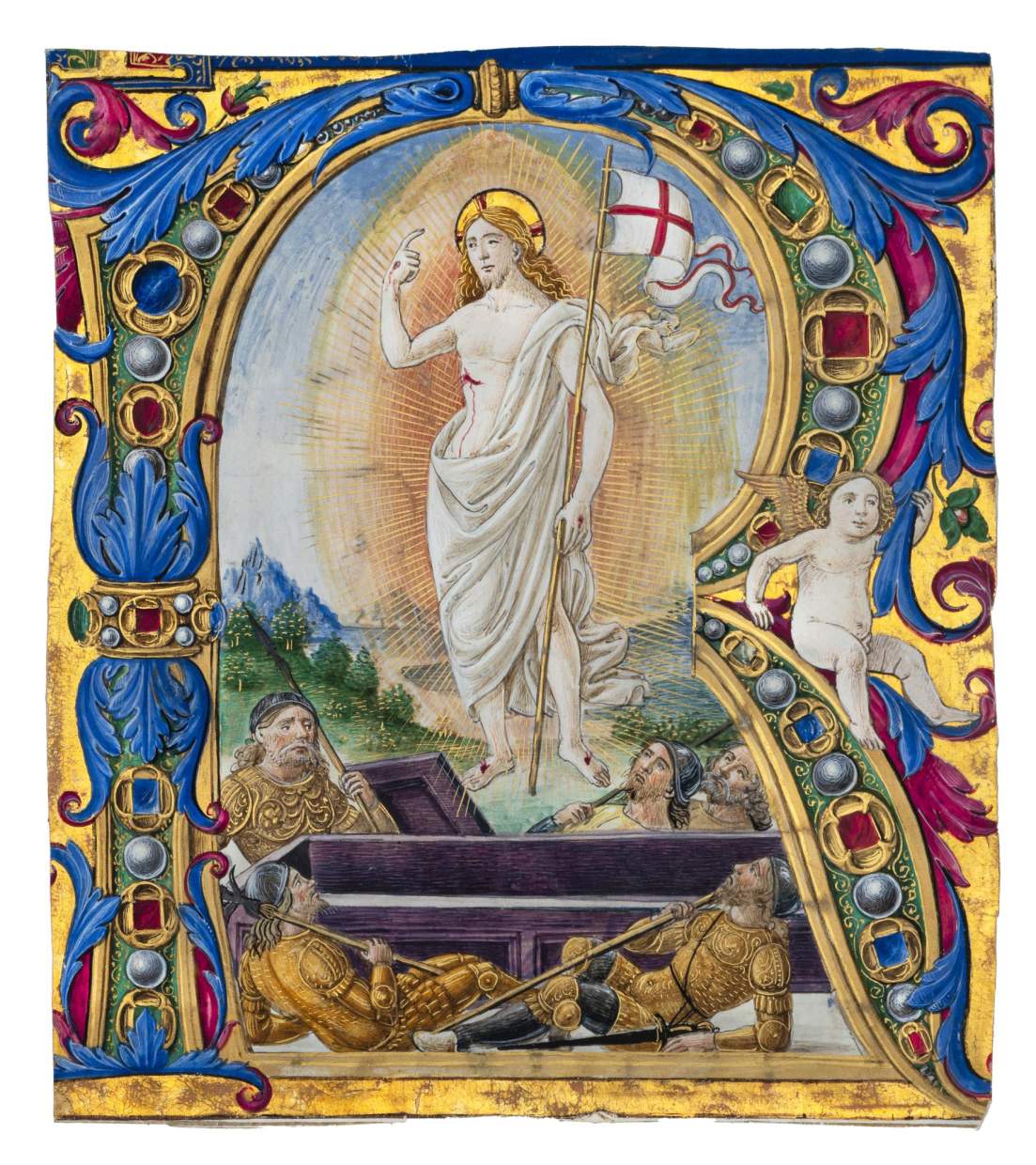

Verso six lines of text in textura in red and black ink.

Verso six lines of text in textura in red and black ink.
This beautiful miniature most likely originates in a lavishly illuminated missal for Pope Leo X, commissioned around 1513 for use in the famous Sistine Chapel. Depicting the Resurrection of Christ, the viewer can observe the crucial scene within the initial as if gazing through a window. Christ levitates above the open tomb, holding a billowing banner in his left hand, while a white, almost gauze like cloth veils his martyred body. He is surrounded by a brightly shining aureole of gold and yellowish orange rays. Soldiers lie behind and in front of the tomb, looking up at Christ, mesmerised by the unfolding events. The background opens into a sweeping landscape with trees, a winding river, and distant mountains painted in hues of blue.
This magnificent miniature is the work of Vante di Gabriello di Vante Attavante, called Attavante degli Attavanti (1452–1520/25). He was one of the most important Renaissance illuminators in Florence and executed commissions for the Medici and the Hungarian King Matthias Corvinus. As a student of Antonio del Chierico, Attavante aided in the creation of an Antiphonal for the cathedral at Florence in 1471–72. Attavante degli Attavanti, who is considered the most successful and prolific illuminator in late-15th- and early-16th-century Florence, created a variant of the Resurrection presented here in another missal commissioned by Silvio Passerini in 1517, when he was appointed cardinal by Leo X.
The miniature is most remarkable for its vibrancy and brilliant colouring which seems untouched by time. Framing the scene is the body of the initial which is opulently decorated with precious stones, pearls, full-bodied acanthus leaves, and delicate golden engravings. A cheerful putto rests on the downward slope of the R. The eye of the beholder marvels both at the unravelling scene and its luxurious framing. The body of Christ, levitating above the tomb commands attention. Attavante is able to create depth and the illusion of space through layering of elements and contrasting the warm colours of the aureole with the pale body of Christ in front of the landscape in its green and blue hues. With great sensitivity the artist has modelled Christ’s body and gently draped it with soft layers of cloth reminiscent of Botticelli’s works. This initial is a wonderful example of the highest achievements of Florentine book art of the early 16th century.



